How to Clone a Cat: Science and Ethical Insights
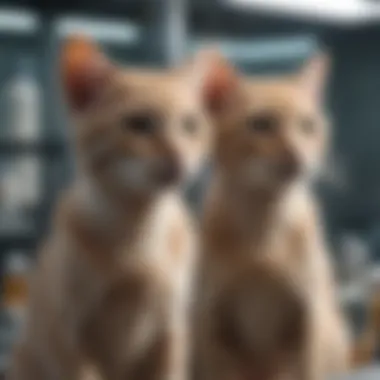
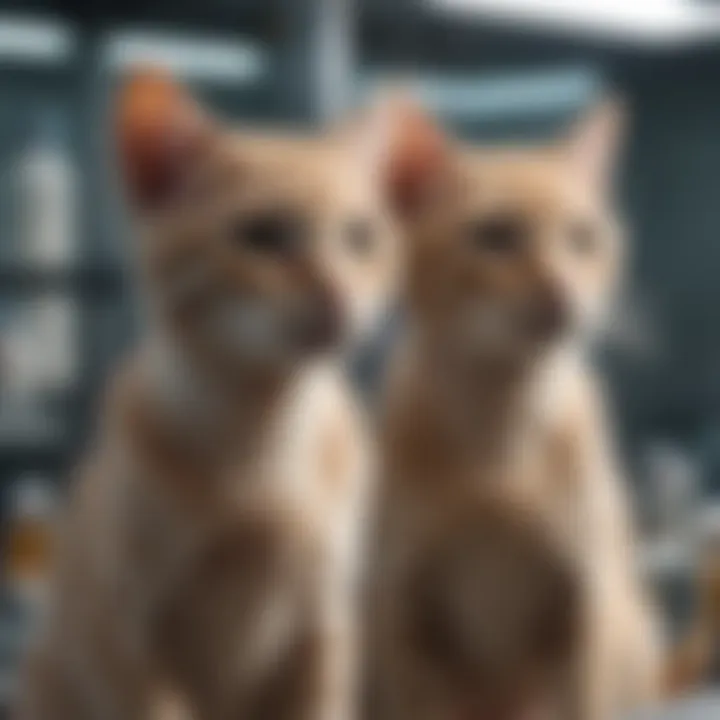
Intro
The topic of cloning cats raises important questions regarding the methods used and the ethical considerations involved. In recent years, advancements in biotechnology have made it possible to replicate certain animals, including domestic cats. Understanding how this process works is essential for pet owners, researchers, and everyone interested in veterinary science. This article provides a thorough look at the science behind feline cloning and the moral complexities that accompany it.
Methodology
Overview of Research Methods Used
The primary technique employed in cloning a cat is called somatic cell nuclear transfer (SCNT). This method has been refined over the years, primarily drawing from its application in other species such as sheep and dogs. In SCNT, the nucleus of a somatic cell, which contains the genetic material, is transferred into an egg cell from which the original nucleus has been removed. This creates a zygote that, if successful, can implant into a surrogate mother and develop into a clone.
Researchers have documented various success rates of SCNT in cats. The process itself involves several steps that require precision, including selecting the donor cells, enucleation of the egg cells, and stimulating the newly formed zygote to divide and develop. The success of these procedures often hinges on multiple factors, including the health of the donor cells, the age of the egg, and the condition of the surrogate.
Data Collection Techniques
Data collection regarding the efficacy of cat cloning involves both qualitative and quantitative research methods. Researchers gather information on the lifespan of cloned cats, their genetic health, and behavioral traits. Animals that undergo the cloning process are subjected to extensive health evaluations to monitor any potential complications that may arise as a result of genetic replication. Surveys and interviews with pet owners who have undergone the cloning process also contribute valuable insights into personal experiences and perceptions surrounding pet cloning.
"The cloning of pets raises not only scientific intrigue but also important ethical dilemmas about our responsibilities to these creatures."
Future Directions
Upcoming Trends in Research
The field of cat cloning is still developing. Innovations in genetic technology may lead to higher success rates and lower costs. Additionally, as the understanding of genetic disorders improves, there is potential for cloning to serve not only as a means of companionship but also as a tool for genetic research and disease prevention.
As the techniques become more refined, interest in cloning may extend beyond personal pets to conservation efforts for endangered species. Researchers are exploring how cloning techniques can assist in maintaining genetic diversity within vulnerable animal populations.
Areas Requiring Further Investigation
Despite advances, substantial questions remain. The ethical implications of cloning pets—specifically concerning their well-being and the potential for them to be treated as mere copies—demand thorough exploration. Understanding these nuances is crucial for guiding future research and informing best practices in veterinary medicine. Furthermore, societal attitudes towards cloning may shape how the science of cat cloning evolves. Regulatory frameworks also need development to ensure the welfare of cloned animals while maintaining scientific integrity.
Prologue to Feline Cloning
The exploration of feline cloning combines the cutting-edge advancements of science with profound ethical questions. Understanding this topic is crucial in its application and implications, especially given the emotional attachment people have to their pets. Cloning offers a means to replicate beloved animals but raises concerns about identity, welfare, and ethical responsibilities.
Defining Cloning
Cloning refers to the process of producing genetically identical individuals. In the context of animals, this typically involves techniques such as somatic cell nuclear transfer. This technique extracts the nucleus from a donor cell and transfers it into an egg cell from which the nucleus has been removed. The result is an embryo that possesses the genetic makeup of the original organism. Understanding this definition provides the foundation for delving into the more complex discussions surrounding feline cloning.
Historical Context of Animal Cloning
The journey of animal cloning began with ambitious scientific endeavors and notable achievements. The first successful clone was Dolly the sheep in 1996, generated through somatic cell nuclear transfer. This experiment paved the way for further advances in cloning technologies, sparking both admiration and concern across the globe. With the successful cloning of various mammals, including cows and pigs, attention soon turned to pets.
In 2004, the first cloned cat, named Carbon Copy, was born. Carbon Copy was a replica of its donor cat, demonstrating that it's possible to clone felines. This historical moment marked a significant step in animal cloning, opening discussions about the feasibility and ethics of cloning beloved pets.
Cloning cats presents a unique set of challenges and considerations in veterinary medicine, alongside the emotional attachments pet owners have to their animals. With historical context in mind, it becomes easier to comprehend the ongoing debates about the practicality and desirability of cloning household pets.
The Science of Cloning Cats
The science of cloning cats represents a confluence of advanced genetics and ethical inquiry. Cloning has the potential to provide a way to replicate a beloved pet, but it also unfolds a range of considerations regarding animal welfare, genetic diversity, and the implications of creating life in a laboratory setting. Understanding this science is crucial for pet owners and researchers alike, as it clarifies the methods, the associated risks, and the profound impact this technology could have on future generations of pets.
Somatic Cell Nuclear Transfer
Somatic Cell Nuclear Transfer (SCNT) is the cornerstone of feline cloning. This technique involves transferring the nucleus of a somatic (non-reproductive) cell into an oocyte (egg cell) that has had its nucleus removed. The nucleus contains the DNA, which is essential for developing a clone. This process allows for the genetic material from the donor cat to be used, effectively creating a genetic copy.
SCNT has seen success in various animal cloning projects, with the most famous being Dolly the sheep. However, in the context of cats, the science remains experimental and requires a better understanding of feline reproductive biology.
Preparation of Donor Cells
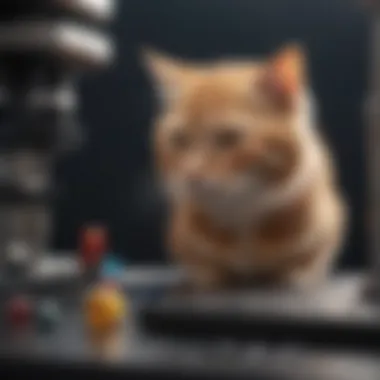
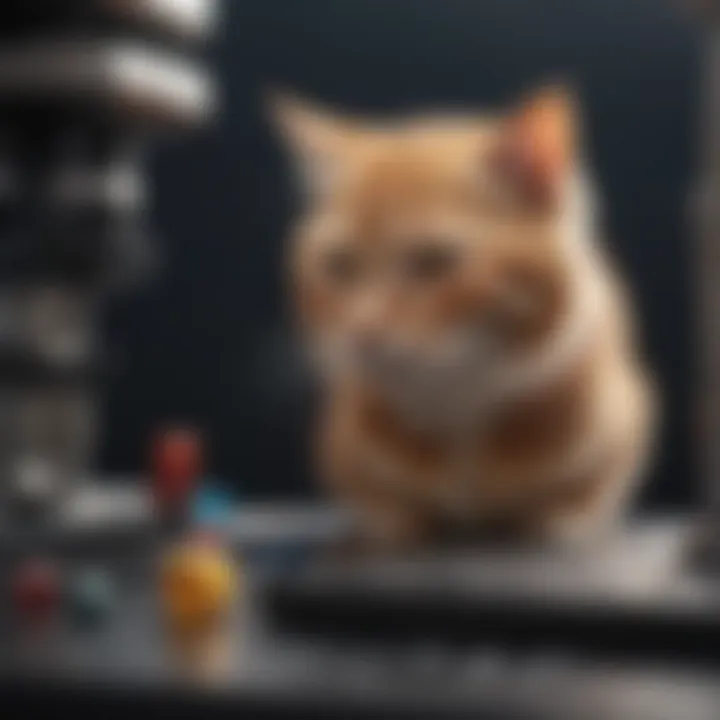
The preparation of donor cells is a critical step in the cloning process. Scientists typically use skin cells, which are abundant and easy to access. The skin cells are cultured in a laboratory to promote growth and maintain viability. Once a sufficient number of cells are ready, they undergo a cycle of dedifferentiation, meaning they are induced to revert to a more primitive state.
This preparation helps to ensure that when the cells are introduced to the egg, they can reprogram effectively, contributing to the embryo's development. However, it's important to note that not all donor cells are suitable for cloning. The choice of cells can affect the success rate and quality of the resulting clone.
Fusion with Egg Cells
Once the donor cells are prepared, they are fused with enucleated egg cells. This fusion is often achieved through electrical pulses or chemical treatments, which stimulate the egg cell to accept the donor nucleus. This step is pivotal; it marks the beginning of the development of a cloned embryo.
The efficiency of this fusion process can influence the overall success of cloning. In many cases, a significant number of fused embryos may fail to develop, which is a major challenge in cloning technology.
Embryo Development
After fusion, embryo development follows. The resulting embryo is cultured in a laboratory setting for several days. During this time, it undergoes several divisions, transitioning from a single cell to a multicellular structure. The cultivation environment is carefully controlled to mimic natural conditions, as temperature and nutrient supply are vital factors.
This stage highlights a crucial concern: the rate of developmental abnormalities found in clones. Many cloned embryos do not progress normally, leading to health issues that could persist in the resulting animal. Therefore, it is essential to monitor and assess embryos during this phase rigorously.
Implantation and Gestation
If the embryos develop successfully, some are selected for implantation into a surrogate mother. This stage involves placing the cloned embryos into the uterus of a fertile cat. Gestation then begins, mirroring natural reproduction. The length of this period is about 63-65 days for cats.
The success of implantation is dependent on multiple factors, including the health of the surrogate and the quality of the embryo. Not all cloned embryos will implant successfully, and those that do may face complications during gestation.
Success Rates and Challenges
Understanding the success rates and challenges in the process of cloning cats is essential for grasping the full scope of this scientific endeavor. Cloning research is still an evolving field with many complexities. Success rates reflect the efficiency of the methods used, but they also invite scrutiny on ethical implications and resource allocation. Emerging data can help improve techniques, or raise pertinent questions about the viability of the cloned animals. A careful examination of these success rates and the obstacles faced provides insight not just for potential pet owners, but also for researchers and the veterinary community.
Current Success Rates in Feline Cloning
Currently, the success rates for feline cloning remain relatively low in comparison to other species. Reports indicate around a 10 to 20 percent success rate for creating viable embryos through somatic cell nuclear transfer. This low efficiency is primarily due to the complexity of the feline reproductive system and difficulties in integrating donor genetic material successfully.
Despite advances, many cloned embryos fail to develop properly, which results in miscarriages or stillbirths. Thus, while there has been progress, there is still much room for research and improvement in the techniques being employed. The financial and emotional toll on pet owners looking to clone their beloved cats must be considered alongside these rates.
Common Obstacles Faced
Several significant challenges arise within the realm of feline cloning. These obstacles contribute to the low success rates and ongoing debate about the feasibility of cloning as a companion animal option. Some of the primary challenges include:
- Technical Difficulties: The process of somatic cell nuclear transfer is intricately detailed and requires immaculate precision. Any errors in technique can lead to failure of embryo development.
- Limited Genetic Diversity: The donor cells used for cloning may not represent the genetic diversity necessary for a healthy cloned cat. This raises concerns about potential health issues in cloned animals due to inbreeding.
- Resource Allocation: Cloning procedures are costly, not only financially but also in terms of resources required for research. This raises questions about the justification of these investments when many stray and shelter animals need homes.
- Ethical Concerns: Beyond technical and financial challenges, ethical considerations regarding the welfare of the cloned animals and the implications of cloning as a practice cannot be ignored. The cloning success rates are a reflection not only of scientific advancement but also of critical ethical discussions that surround this frontier in pet ownership.
“Cloning is not merely a scientific endeavor; it is also a profound ethical conversation that must be engaged.”
As cloning technology advances, understanding these obstacles becomes crucial for anyone interested in the implications of cloning an animal companion. Addressing these challenges will require collaboration among scientists, ethicists, and society at large to navigate the future of cloning responsibly.
Financial Implications of Cloning a Cat
Understanding the financial implications of cloning a cat is crucial for prospective pet owners, veterinarians, and researchers involved in this innovative field. The process of cloning a cat goes beyond the technical science; it includes considerations regarding costs, investment versus emotional value, and the potential for future advancements in veterinary practices. This section dissects the costs involved in cloning a cat and contrasts these with traditional pet options, providing readers with a comprehensive understanding of the financial landscape of feline cloning.
Cost Breakdown of Cloning Procedures
When considering cloning a cat, it's essential to have a clear grasp of the estimated expenses involved. The financial outlay for cloning involves multiple facets, including:
- Initial Consultation Fees: Engaging with veterinary specialists or cloning facilities often requires an initial assessment, which can range from $200 to $600.
- Biological Sample Collection: Obtaining samples from the donor cat, usually through minor surgical procedures or special techniques, can add another $500 to $1,500.
- Cloning Process Fees: The core cloning procedure, including somatic cell nuclear transfer, can typically cost between $25,000 and $50,000. This figure can vary based on the facility and specific technology used.
- Post-cloning Care: Ongoing care for the cloned kitten, which may involve vaccinations, checkups, and other medical needs, can range from $300 to $1,000 in the first year.
These costs can lead to a significant financial commitment, prompting many potential pet owners to weigh their options carefully. Given the high price tag of cloning, it’s vital for individuals to consider whether the benefits justify the investment.
Comparative Analysis with Traditional Pet Options
The financial perspective on cloning must be contrasted with the costs associated with traditional pet options, such as adopting or purchasing a cat from a shelter. Consider the following points:
- Adoption Costs: Adopting a cat from a shelter generally involves a fee between $50 and $300. This fee covers initial vaccinations and spaying or neutering, which makes adoption considerably more affordable.
- Pet Purchases from Breeders: Purchasing a purebred cat from reputable breeders usually costs between $1,000 and $3,000, depending on the breed. This is substantially less than cloning costs.
- Value Beyond Economics: While traditional pet ownership provides companionship and love, cloning raises questions: Is the cloned cat fundamentally the same as the original? Can it truly replace the emotional bond with the deceased pet? These aspects often overshadow mere financial figures.
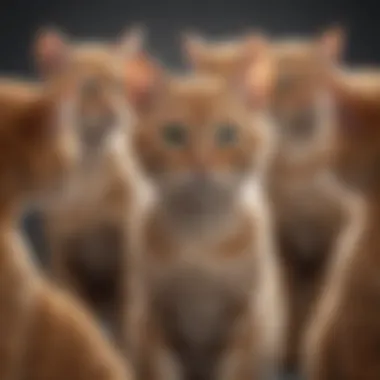
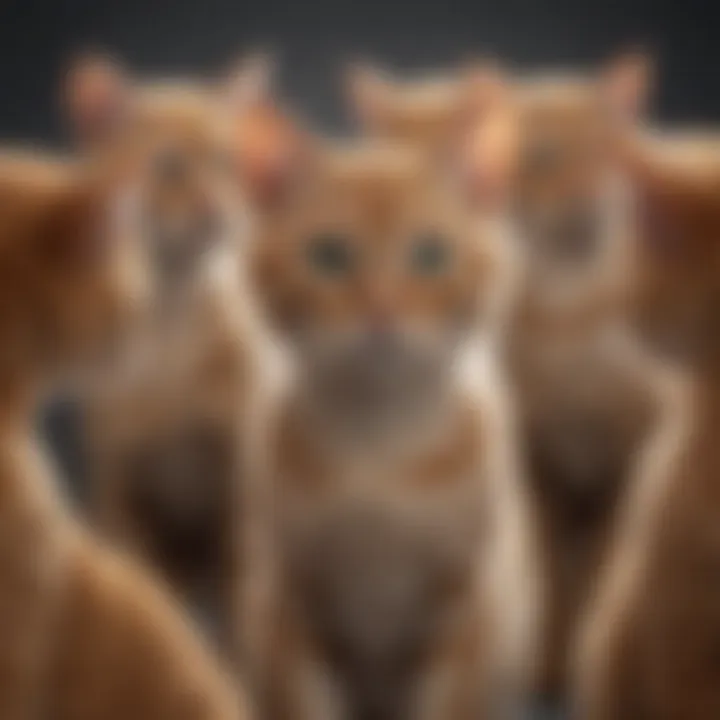
Ultimately, individuals seeking to clone a cat must weigh the emotional significance of replicating a beloved pet against the enormous financial investment required to do so. This analysis can help inform decision-making and bring clarity to a complex and often emotionally charged issue.
Cloning in Veterinary Medicine
Cloning in veterinary medicine is a significant area of exploration that goes beyond merely facilitating companionship for pet owners. It serves as a versatile tool that can address various medical and scientific challenges. In this section, we will examine the applications of cloning in this field and analyze research advancements that arise from these technologies, providing insights that can benefit both animal health and conservation efforts.
Applications Beyond Companionship
The advantages of cloning in veterinary medicine extend to areas such as conservation biology, genetic research, and medical applications. For instance, scientists have used cloning to help preserve endangered species. When natural reproduction fails due to low population numbers, cloning provides a method to increase genetic diversity. This is crucial because it enhances the chances of survival for species at risk of extinction.
Cloning is also valuable in the agricultural sector. By utilizing cloning techniques, farmers can reproduce high-quality livestock, ensuring consistent traits such as disease resistance or improved productivity. This not only helps meet food demands but also maintains a healthier food supply.
Moreover, veterinary medicine can benefit from cloning in the realm of regenerative medicine. Stem cell research, which often employs cloned cells, holds promise for treating a variety of ailments in pets, thereby improving animal health outcomes.
Research Advancements Stemming from Cloning
The field of cloning has propelled advancements in various scientific domains. One of the most notable impacts is the enhancement of genetic understanding. Through cloning, researchers gain insight into genetic expressions and interactions, leading to breakthroughs in biotechnology and genetics.
Furthermore, cloning contributes to the development of personalized medicine for animals. As scientists unravel the genetic landscape of different species, they can tailor treatments based on specific genetic profiles. This leads to more effective interventions and improved health management strategies.
In addition, cloning fosters collaboration across disparate scientific fields. Veterinary professionals, geneticists, and conservationists often work together on cloning projects. Such interdisciplinary efforts yield a well-rounded approach, promoting innovation while addressing ethical considerations in cloning practices.
"Cloning in veterinary medicine not only has the potential to enhance companion animals’ lives but can also play a pivotal role in biodiversity preservation and agricultural efficiency."
Overall, the applications and research stemming from cloning in veterinary medicine emphasize its broader potential, transcending the initial perspectives focused solely on replicating pets. Understanding these aspects is essential for both current practices and future developments in the field.
Ethical Considerations in Animal Cloning
The topic of ethical considerations in animal cloning is crucial to understanding the broader implications of cloning technology. As science advances, the capacity to clone animals, especially pets like cats, grows. This leads to significant questions about the morality of such actions and the impact on animals involved.
Animal Welfare Concerns
The welfare of cloned animals is a major concern in the cloning debate. Research indicates that cloned animals often experience higher rates of health issues compared to naturally conceived ones. Many studies show that cloned pets might face complications during birth, genetic diseases, or shorter lifespans. Hence, the question arises: Is it ethical to proceed with cloning if the animals have a decreased quality of life?
Moreover, the surrogate mothers used in cloning procedures can also suffer from health risks during pregnancy. Ethical frameworks suggest that animal welfare should be prioritized, requiring deeper consideration of how the cloning process affects all living beings involved. Understanding these concerns helps drive discussions on whether current practices are acceptable or need reform.
The Moral Debate: Is Cloning Justifiable?
The moral implications of cloning extend far beyond animal welfare. Opponents argue that cloning pets for companionship commodifies life, reducing beings to mere products for human satisfaction. This perspective asserts that cloning could normalize the view of pets as replaceable items rather than living entities deserving of emotional regard.
On the other hand, advocates for cloning posit that this technology can preserve beloved traits of deceased animals, thus fostering emotional connections that might contribute to human well-being. They argue that as long as ethical guidelines are followed to ensure animal welfare, cloning can serve a valid purpose. This complex dialogue highlights the need for a nuanced understanding of both sides of the moral spectrum.
Societal Implications of Cloning Pets
The societal ramifications of pet cloning must also be considered. As cloning becomes more accessible, it can influence public perceptions of animal companionship. People might begin to equate a lost pet with a simple cloning process, undermining the natural grief associated with death.
Additionally, societies that accept cloning may face debates on the value of genetic diversity. Over-reliance on cloning could lead to homogeneity in pet populations, which may impose risks on overall health. Balancing these societal implications against individual desires for cloned pets is essential for forming informed positions on cloning practices.
In summary, while the possibility of cloning cats opens new avenues for pet ownership, it simultaneously calls for rigorous ethical scrutiny to assess the broader impacts on animal welfare, moral standings, and societal norms.
Public Perception of Cloning
Understanding public perception of cloning, especially in the context of cats, is essential. It influences both policy and scientific research. As cloning technology advances, it shapes how society views the practice. Public attitudes can impact regulations and funding for cloning research. Moreover, they can determine how veterinarians and pet owners approach the idea of cloning. A negative perception might hinder advancements, while a positive one can fuel innovation and acceptance.
Surveys and Studies on Attitudes Toward Cloning
Surveys play a vital role in gauging public attitudes toward cloning. Various studies have revealed a mix of opinions. For instance, some surveys indicate that a significant percentage of pet owners find the idea of cloning appealing, as it offers a chance to replicate a beloved pet. Others express ethical concerns and discomfort with the procedures involved.
The variation in attitudes often aligns with demographics. Younger individuals tend to be more open-minded about cloning compared to older generations. This disparity could stem from differences in exposure to technology. As technological advancements emerge, public discourse evolves. The results of surveys not only reflect current views but also predict future acceptance or resistance of cloning.
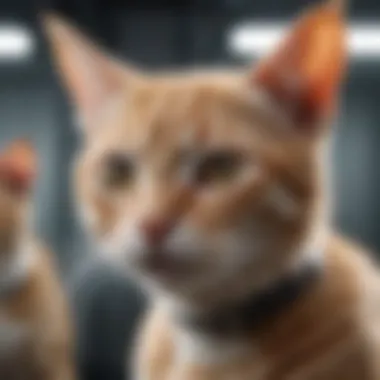
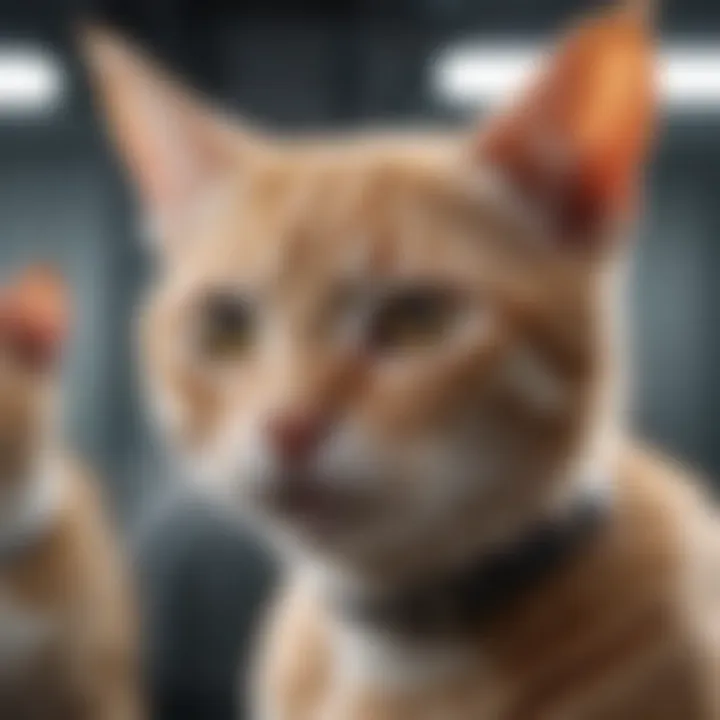
Role of Media in Shaping Views
The media plays a crucial role in shaping how the public perceives cloning. Coverage can heavily influence opinions, for better or worse. Reporting that highlights the successes of cloned pets can generate interest and excitement. Stories of cloning breakthroughs often capture attention, leading to increased awareness. Conversely, negative coverage can engender skepticism. Sensationalism surrounding failed cloning attempts might scare potential pet owners.
The portrayal of cloning in film and television also affects perceptions. If cloning is depicted as a dystopian concept, this can foster fear and misunderstanding. In contrast, educational programming that offers a nuanced view can encourage informed discussions.
Furthermore, social media platforms amplify voices and opinions. Platforms like Facebook and Reddit allow individuals to engage in conversations about cloning, creating communities of supporters and critics alike. These interactions can lead to a more informed public but can also spark controversy. Therefore, the media's framing of cloning significantly impacts societal attitudes, which ultimately influences the future acceptance of cloning as a legitimate practice.
Case Studies of Cloned Cats
The study of cloned cats offers valuable insights into the realities and implications of feline cloning. By examining notable cases, one can glean important lessons about not only the technical aspects of the process but also the emotional and ethical ramifications involved. These case studies serve as practical examples of the methodology and the outcomes of cloning, making abstract concepts tangible and relatable.
Notable Cloning Projects
Several memorable projects highlight the advancements and challenges in cat cloning. The first well-known cloned cat, CC or Copy Cat, was created at Texas A&M University in 2001. CC's success marked a significant milestone in cloning technology. Researchers used somatic cell nuclear transfer to replicate a domestic cat. The project aimed to understand and improve cloning techniques, providing a template for future feline cloning projects.
Little Nicky is another notable example. This cloned cat was created using skin cells from a beloved pet, directly addressing the emotional aspect of cloning. Owners used cloning as a means to cope with loss, exemplifying how cloning technology can serve personal healing.
These projects illustrate not just technological prowess but also the complexities of human emotions surrounding pet ownership and loss. They signify an important intersection between science and companionship.
Success Stories and Failures
While some case studies celebrate success, others highlight failures that provide critical lessons in cloning practices. Success stories like CC demonstrate the potential of cloning to bring forth living beings genetically identical to their original counterparts. These successes validate the techniques employed but also raise questions about the quality of life and health of cloned animals.
On the other hand, failures also exist. For instance, many embryos may not survive implantation, wasting valuable resources and animal lives during the process. According to research, about 90% of attempts result in failure. This stark reality forces stakeholders to consider whether the emotional and financial investments justify the outcomes.
Furthermore, cases of health issues in cloned animals, like shortened lifespans or genetic abnormalities, provoke debate regarding the ethical implications of cloning. Such outcomes necessitate thorough ethical reviews before proceeding with similar projects in the future.
"Every case study of cloned cats adds depth to our understanding of both the promise and peril of animal cloning."
In summary, examining case studies of cloned cats reveals a complex tapestry of scientific innovation intertwined with ethical considerations. These stories serve not only as a testament to the science but also provide crucial insights that inform future endeavors in cat cloning.
The Future of Animal Cloning
The prospect of animal cloning, especially when focusing on beloved pets like cats, has garnered substantial interest. This field exhibits rapid advancements both scientifically and ethically. Understanding the future of animal cloning is essential as it influences our approach to pet ownership, veterinary practices, and the broader implications regarding animal welfare.
The importance of this topic lies in its potential to reshape relationships between humans and animals. As cloning technology matures, it promises to redefine how we view pet loss and companionship. More than merely replicating a cat's physical appearance, the process poses questions about identity and the essence of what makes a pet unique.
Potential Innovations on the Horizon
As science progresses, several innovations in the cloning sector are on the forefront. Researchers are constantly exploring new techniques intended to improve both success rates and ethical ramifications.
- Improved Techniques: Innovations in somatic cell nuclear transfer may lead to more efficient cloning processes. Scientists are experimenting with advanced gene-editing tools like CRISPR, allowing for enhanced control over genetic traits.
- Custom Cloning Services: Some companies are looking to offer customized cloning services where pet owners can tailor specific traits or characteristics in cloned animals. This could appeal to those seeking pets with improved health or even certain behavioral aspects.
- Genetic Preservation: New biobanking methods allow for better preservation of genetic material. This capability could result in a more diverse genetic pool, thereby assisting in avoiding inbreeding and related health issues.
- Public and Ethical Guidelines: As cloning advances, establishing strong public protocols and ethical guidelines becomes crucial. Innovations that address welfare concerns will help ensure that cloning practices are humane and transparent.
Trends in Pet Ownership and Cloning
The trends in pet ownership are evolving, with cloning as a growing consideration. Factors that influence this trend include:
- Emotional Attachment: Many pet owners exhibit profound emotional ties to their pets. The option of cloning allows them to preserve a part of their cherished cat after its passing.
- Longer Lifespans: Advances in veterinary care contribute to longer lifespans for pets. As these trends continue, the desire to clone beloved pets may increase, especially as the bond grows stronger over time.
- Alternative Choices: More people are considering cloning as a valid alternative to adopting or buying new pets. This consideration is particularly pronounced when owners wish to replicate specific behaviors or traits observed in their deceased pets.
- Impact of Social Media: The role of social media plays a significant part in shaping public perceptions about cloning. Stories, images, and experiences shared online help to spark discussions around cloning and contribute to the culture surrounding animal companionship.
"The future of cloning technology rests on the balance between scientific ambition and ethical responsibility, echoing wider societal shifts in our relationship with animals."
In summary, the landscape of animal cloning is changing rapidly, paving the way for new innovations and altered perspectives in pet ownership. The integration of technology into animal companionship presents both opportunities and ethical dilemmas that will need careful consideration as stakeholders navigate this complex field.
Closure
The conclusion of an article about feline cloning serves a critical role. It is the final summation of the extensive discussions on the science, ethics, and implications of cloning cats. This section is imperative as it helps to encapsulate the key arguments and insights presented throughout the article. Cloning a cat is not merely a scientific pursuit; it carries diverse emotional, ethical, and societal ramifications.
Summary of Key Points
Understanding the cloning process involves examining various steps. This begins with techniques such as somatic cell nuclear transfer and donor cell preparation, which are foundational to any successful cloning endeavor. Alongside this, current success rates highlight both achievements and ongoing challenges in the field. Financial implications are also significant, revealing the costs of cloning compared to traditional pet adoption approaches. Additionally, ethical considerations consistently arise in discussions about cloning for companionship, particularly about animal welfare and societal impacts.
Closing Thoughts on the Cloning Debate
The debate around cloning pets continues to evoke strong emotions and differing opinions. Supporters argue that cloning offers a way to preserve cherished animals and enhance veterinary medicine. Critics, however, emphasize the ethical complexities and possible welfare issues involved in cloning practices. It is essential for society to engage in this discourse thoughtfully.







